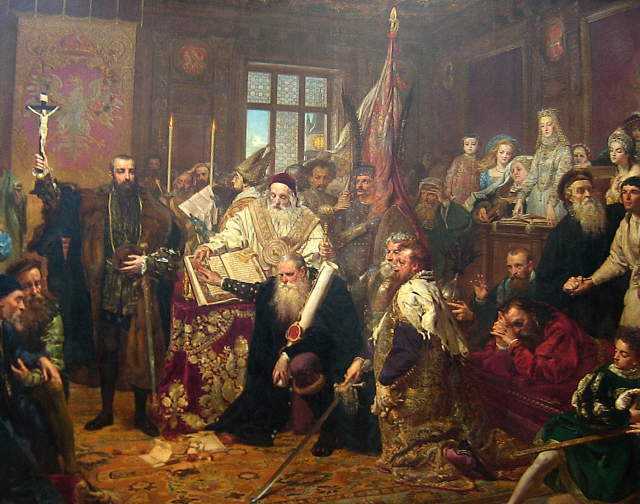An introduction to the Polish-Lithuanian Commonwealth

A classical republic
The Polish-Lithuanian Commonwealth was one of the largest and most populous countries of 16th and 17th century Europe. The Commonwealth had a unique constitution which placed strict controls on monarchical authority. Legislation was administered by a bicameral legislature, with the king bound to comply with the constitutional principles dictated by the Henrician Articles. As such, the Commonwealth was an early precursor of modern parliamentary systems of government. The constitutional principles embodied in the 1573 Henrician Articles, which established that the whole citizen body had a right to participate in the election of the king.
The country also maintained unprecedented levels of ethnic diversity and relative religious tolerance, guaranteed by the Warsaw Confederation of 1573, in response to the challenges posed by the Reformation and Counter-Reformation. The Commonwealth was the pre-eminent power in Eastern Europe countering, for many years, the rise of the Ottoman Empire, the Grand Duchy of Muscovy and the Kingdom of Sweden.
The Polish-Lithuanian Commonwealth, much like the Union that preceded it, was a bridge between Europe and Asia. Its history is a vital and fascinating piece of the puzzle for those who would like to better understand the Europe of today.
In this podcast, Professor Robert Frost (Burnett Fletcher Chair of History) of the University of Aberdeen, looks at the origins and development of the Polish-Lithuanian Commonwealth.
1. What were the origins of the Polish-Lithuanian Commonwealth?
2. The Union of Lublin and the creation of a classical republic. A community of citizens with a central parliament.
3. The death of Sigismund August. The republican body elects a new king. The Henrician Articles limits the kings power, define how he is chosen and the Warsaw Confederation is signed to uphold religious toleration and freedoms.
4. Renaissance origins of the republic. Poland-Lithuania moves towards the Aristotelean Republic as the rest of Europe moves towards absolutist monarchs.
5. The Union is a success up to the late 1640s because it built around this republican vision. The principle of unanimity is utilised to protect minorities.
6. The Polish-Lithuanian Commonwealth remains the dominant state in eastern and northern Europe down to 1648. Parallels with the EU’s Council of Ministers unanimity rules.
7. What are relations like between the Polish-Lithuanian Commonwealth and Western Europe?
8. A golden age for Polish-Lithuanian literature and science. The rise of Roman Catholic Jesuit schools. Orthodox citizen elites start to convert to Catholicism and adopting the Polish language creating a rift.
9. The First Northern War – power politics between Sweden, Denmark, Muscovy, Finland and Poland-Lithuania.
10. War against Muscovy. Civil war in Ukraine. Ottoman invasion. Swedish invasion and the Deluge. Truce with Muscovy ceding parts of Ukraine and Kyiv.
11. John III Sobieski defeats the Ottomans. Power vacuum as Polish-Lithuania becomes unstable. Poland-Lithuania, Russia (Peter I) and Denmark ally to attack Sweden and are defeated by Charles XII.
12. The Great Northern War: a war as significant as the Thirty Years War. The rise and fall of Sweden. The rise of Peter I and the Russian Empire.
13. What should students keep in mind when engaging with this period of Polish-Lithuanian history?
In order to access the full content of the podcasts please Login or Join the HA.

